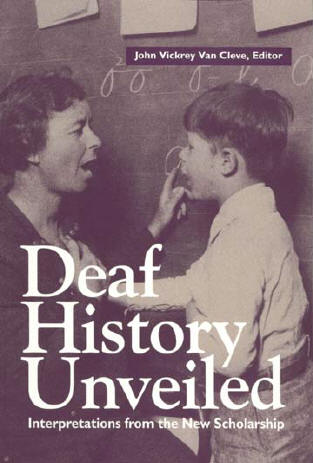
Scholarship on the transition to talkies emphasizes technological, production, and business challenges presented by sound, especially dialogue, in the cinema. Yet historians have not made the connection. The silent movies that were produced during the transition period (1927–1930) were even sometimes called " dumbies, " recalling a common slur regarding the deaf. Contemporaries wrote about these two historical shifts using remarkably similar terms. In each case-manualism to oralism and silents to talkies-the central change involved using audible spoken language in place of a purely visual form of communication. Second, at the cinema, talkies replaced silent movies. First, in deaf education, oralism (lipreading and audible speech) reached its peak level of control as the method of instruction, replacing manualism (sign language). This essay focuses on two cultural shifts at the end of the 1920s, the watershed decade in the emergence of modern culture in the United States. It is argued that disabled and deaf children in institutions were not passive victims but active agents, participating in all of these discourses. These include the spread of Victorian philanthropy, the changing social role of education, and the impact of family lives and leisure time for children.


Finally, the thesis will argue that wider contemporary issues are reflected in the Institution's records, not those exclusive to deaf children.

Likewise, the problematic notion of experience will be explored, questioning the extent to which the voice of the pupils can be found using sources almost exclusively written by the Institution's staff. It challenges historical frameworks which rightly explain the construction of attitudes to disability and deafness, but leave little room for individual variation between pupils and institutions. The work is placed firmly in its historical and social context. It will be suggested that the melodramatic and tragic imagery projected in public by the Institution differed greatly from daily life.

However, equal emphasis will be played on the routines, backgrounds and leisure lives of the pupils themselves. The thesis will examine the major discourses in special education such as the rise of oralism and the increasing role of the state through the 1893 Elementary Education (Blind and Deaf Children) Act, arguing that the Institution's response illustrates the complexity of their application in Wales and Britain. The study explores the institutional sources, asking what can they can show the historian about public attitudes to disability and deafness, and what can be learned about the everyday lives of those who attended the Institution. The Institution opened in Aberystwyth in 1847, moving to Swansea in 1850.
Deaf history unveiled alexander download#
Download via British Library EThOS: This thesis is an extensive analysis of the records of the Cambrian Institution for the Deaf and Dumb, Wales' first institution for boarding and educating deaf children, from 1847 to 1914.


 0 kommentar(er)
0 kommentar(er)
